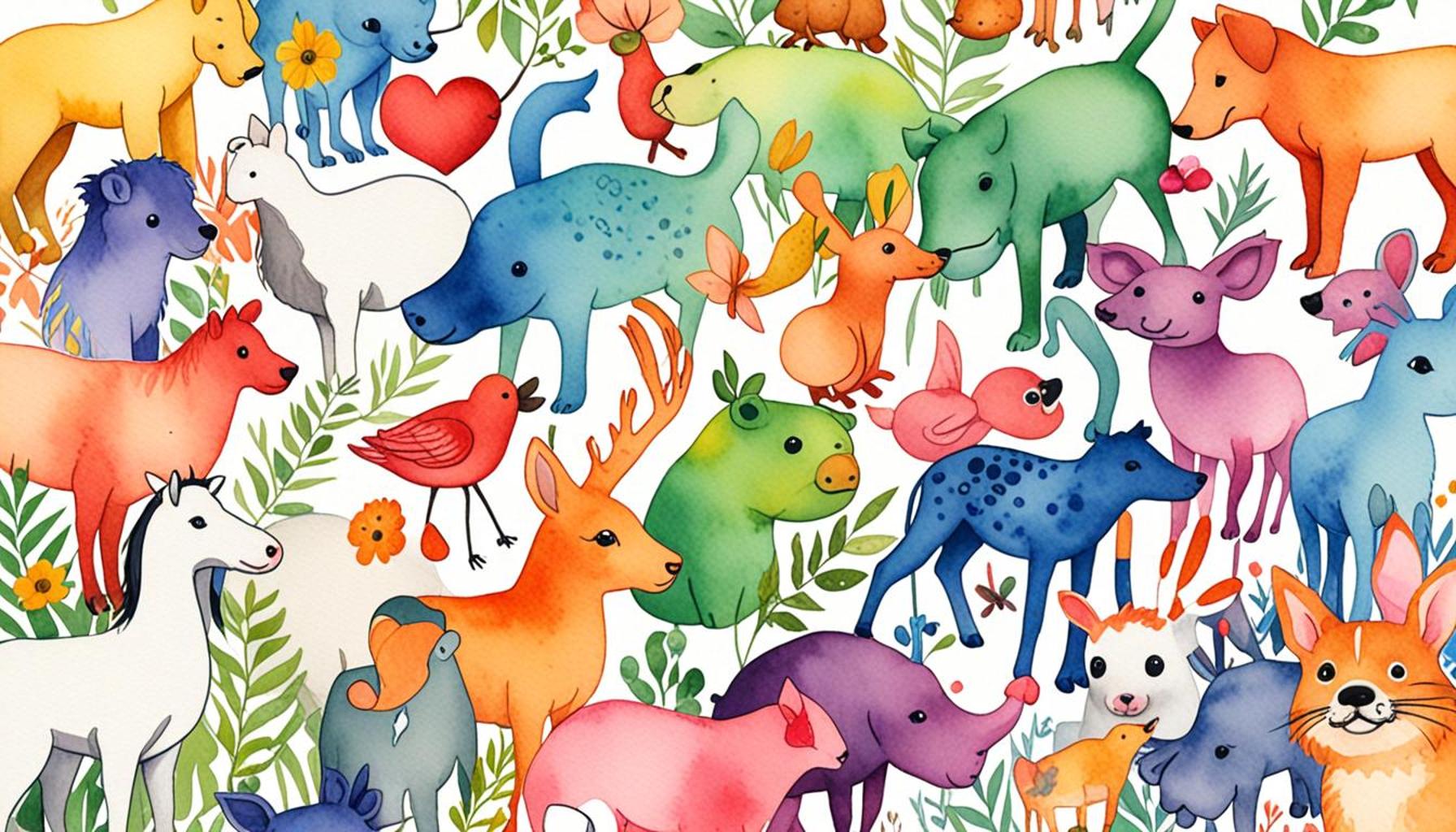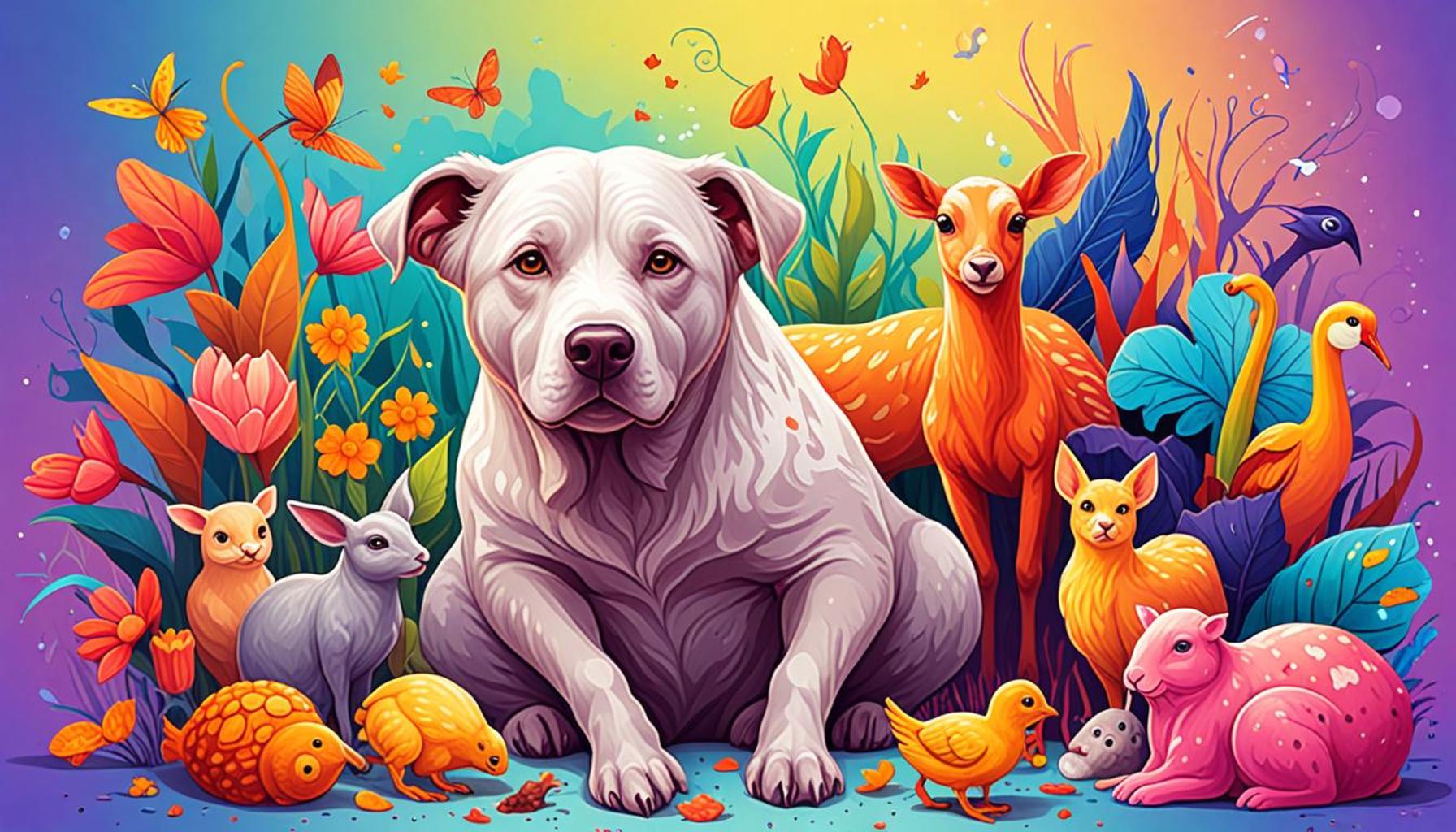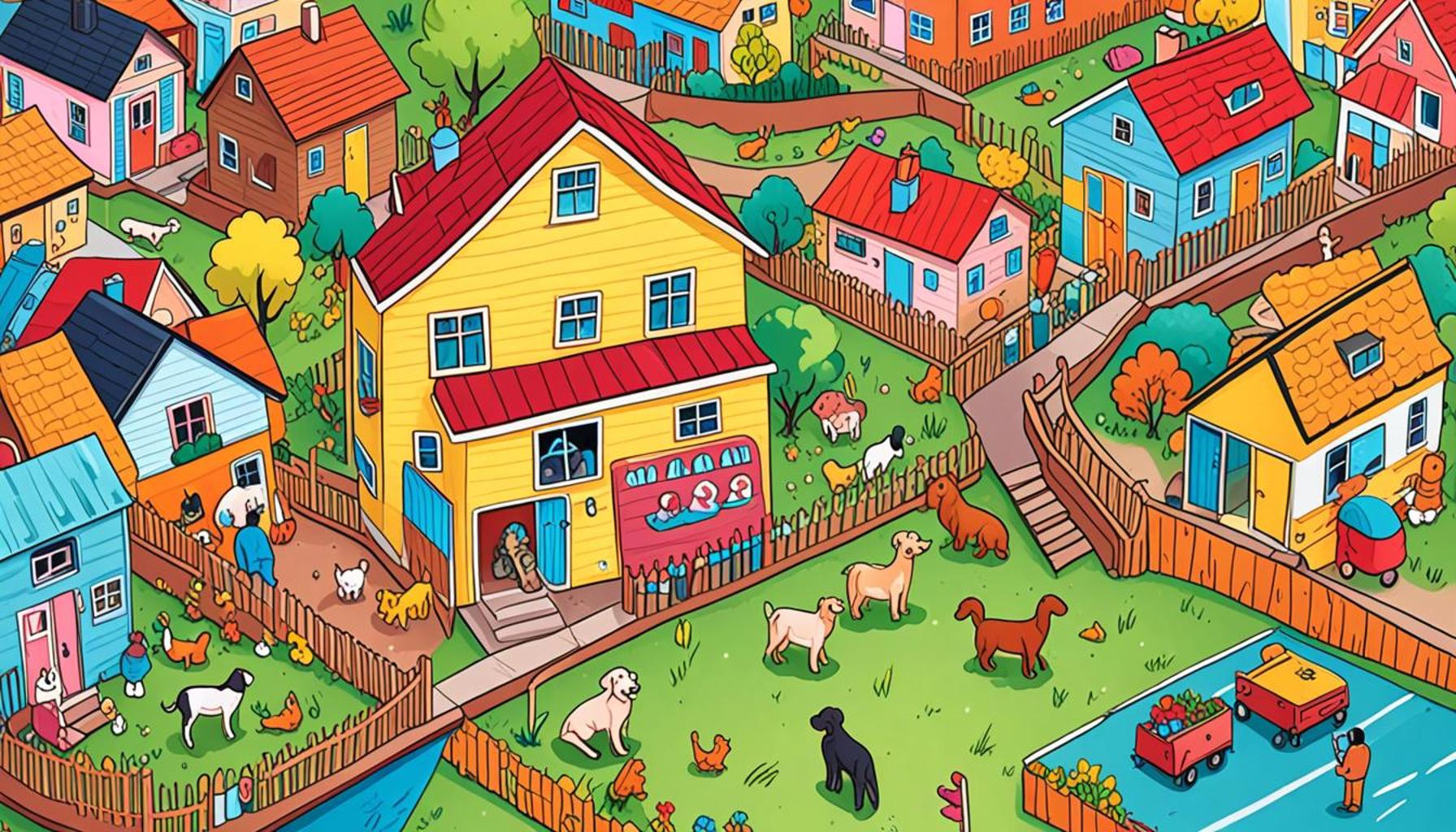The Impact of Social Media on Promoting Animal Adoption: Strategies and Success Stories

Social Media: A Catalyst for Animal Adoption
In the digital age, connecting with potential pet owners has evolved significantly, thanks to the expansive reach of social media. Platforms such as Facebook, Instagram, and Twitter have emerged not only as means of communication but also as crucial channels for rescuing animals and facilitating their adoption. By leveraging these tools, shelters and rescue organizations can convey powerful narratives that resonate with animal lovers across the globe.
Consider the striking statistics that highlight this transformation:
- 70% of pet adopters reported using social media as their main avenue for discovering available animals, showcasing its pivotal role in the adoption process.
- Adoption-related posts featuring endearing pictures and success stories have seen engagement rates soar by up to 90%, evidencing the effectiveness of visual storytelling.
- Social media campaigns utilizing hashtags like #AdoptDontShop reach millions, creating a viral effect that spreads the message far beyond local communities.
This burgeoning reliance on social media has enabled organizations to craft innovative outreach strategies. For instance, various shelters have initiated:
- Online campaigns encouraging user-generated content, where adopters share their experiences and photos with their new pets, fostering a sense of community and connection.
- Live-streamed adoption events on platforms like Facebook Live and Instagram, allowing virtual attendees to meet animals in real time, ask questions, and even engage in bidding wars for their favorite furry friend.
- Visually compelling content featuring heartwarming videos and imaginative graphics that spotlight individual animals, increasing the chances of capturing potential adopters’ attention.
Moreover, the emotional appeal of storytelling on social media cannot be overstated. Success stories of pets finding homes often garner immense attention and can lead to an influx of applications for adoption. For example, The Animal Rescue League of Boston frequently shares touching accounts of pets that have been rescued and rehabilitated, which not only illustrates the organization’s mission but also inspires others to adopt and support their local shelters.
As we explore the intersection of social media and animal adoption, it becomes evident that the impact extends far beyond mere statistics. It is a powerful movement that transforms lives—offering animals a chance at a loving home while enriching the lives of their new families. This dynamic synergy continues to evolve, and understanding its nuances can encourage even more successful adoptions nationwide.

DISCOVER: Click here for local adoption resources
Innovative Strategies in Social Media Campaigns
As shelters and rescue organizations continue to harness the potential of social media, they are employing innovative strategies that not only enhance visibility but also engage potential adopters in meaningful ways. By adapting to the rapidly changing social media landscape, these organizations boost their chances of successful adoptions and create lasting connections between animals and their future families.
One of the most effective strategies involves the use of visually appealing content. With platforms like Instagram being a hub for photo-centric sharing, rescue organizations can showcase animals in a captivating light. A recent report indicates that posts featuring high-quality images of pets receive approximately 36% more interactions than those without. Moreover, engaging captions that tell the story of an animal’s journey from rescue to rehabilitation can effectively draw potential adopters in, moving them from passive viewers to active participants in the adoption process.
- Storytelling Techniques: By employing storytelling techniques that emphasize an animal’s personality and unique characteristics, shelters have seen dramatic increases in engagement. For example, a witty caption about a quirky dog’s antics can not only make followers smile but also create an emotional bond.
- Fun and Interactive Challenges: Organizations like ASPCA have created viral challenges, such as photo contests that encourage participation while widening their reach. These challenges invite followers to post pictures of their adopted pets, thus fostering a sense of community and accountability towards animal adoption.
- Cross-Promotion with Influencers: Collaborating with local influencers who are passionate about animals has proven to be a game-changer. Influencers can authentically share rescue stories, reaching a wider audience and attracting followers who are specifically interested in adopting pets.
Additionally, live streaming events offer an excellent opportunity to connect with potential adopters in real-time. Organizations like the Humane Society of the United States utilize platforms such as Facebook Live to host virtual adoption events, allowing viewers to interact with available animals dynamically. These live sessions often feature pet care discussions, personal anecdotes from volunteers, and even behind-the-scenes tours of the shelter. This strategy not only educates potential adopters about the adoption process but also fosters a transparent and relatable environment, which can lead to increased trust and willingness to adopt.
Furthermore, the role of hashtags in amplifying messages cannot be overlooked. Campaigns primarily using hashtags like #AdoptDontShop facilitate the sharing of success stories across various platforms, igniting conversations that can prompt adoption inquiries. In fact, successful adoptions have been reported to increase significantly during national awareness months, such as Adopt a Shelter Pet Month in October, where coordinated efforts across social media platforms help generate buzz and community involvement.
Thus, it is clear that the multifaceted approach to leveraging social media has profoundly impacted the landscape of animal adoption. By combining visual storytelling, interactive content, and community engagement, shelters are not only enhancing their outreach but are also changing the lives of countless animals, one post at a time.
The Role of Influencers in Animal Adoption
In today’s digital landscape, social media influencers play a crucial role in promoting animal adoption. By leveraging their platforms, these influencers can share heartwarming stories and powerful images that resonate with their followers. This strategy not only raises awareness about the plight of shelter animals but also humanizes the adoption process. For instance, countless Instagram accounts focused on animal welfare have showcased successful adoption stories, leading to an increase in foot traffic to shelters and adoption events.
Engaging Content Strategies
Another powerful strategy involves creating engaging content that showcases the unique characteristics of adoptable pets. Videos, live streams, and interactive posts can highlight the personalities of animals awaiting homes, making them more relatable and appealing. Furthermore, regular updates on a shelter’s social media account can maintain the interest of potential adopters. Content such as “Meet Our Pets Monday” or “Furry Friend of the Week” uses consistent themes to keep followers coming back for more.
Community Engagement through Social Media
Utilizing social media to engage with the local community proves essential in driving adoption rates. Shelters can organize virtual adoption events, utilizing Facebook Live or Instagram Stories to showcase pets in real-time while connecting with robust local audiences. Additionally, social media platforms can serve as a tool to recruit volunteers, foster families, and sponsors, creating a ripple effect in support of animal welfare initiatives.
| Category 1 | Category 2 |
|---|---|
| Influencer Campaigns | Reach a larger audience passionate about animal welfare. |
| Engaging Visuals | Showcase adoptable pets, increasing emotional connections. |
Success Stories Utilizing Social Media
Many shelters have shared remarkable success stories thanks to innovative social media use. For example, a recent initiative by a local shelter featured a 30-day adoption challenge on their Instagram account, resulting in a significant increase in successful placements. These compelling stories not only inspire others to adopt but also create a sense of community around the cause of animal welfare.
Collaborations with Local Businesses
Social media also facilitates collaborations between animal shelters and local businesses, such as coffee shops or pet supply stores, where promotional events can attract a diverse audience. These gatherings create social media buzz and drive foot traffic to shelters, enhancing visibility for adoptable animals and fostering community support.
DISCOVER MORE: Click here to learn about disease prevention for your pets
Success Stories That Inspire
The real power of social media in promoting animal adoption lies not only in innovative strategies but also in the success stories that emerge, capturing the hearts of viewers and motivating them to take action. These narratives highlight resilient animals and their transformative journeys, showcasing how social media can bridge the gap between homeless pets and loving homes.
A notable example is the viral success of the #RescueDogsofInstagram campaign. This initiative features photos and testimonials from proud pet owners who share their experiences of adopting rescue dogs. The hashtag has accumulated millions of posts and serves as a reminder that countless animals are waiting for a second chance at life. By simply scrolling through this compilation of stories, potential adopters find not only inspiration but also a strong community of advocates for animal welfare.
Additionally, organizations like the North Shore Animal League America have innovatively utilized social media to spread success stories. They often feature “Happy Tails” posts, where adopters share heartwarming updates about their newly adopted pets. These updates commonly include pictures and stories that reflect the joy animals bring to their new families. With such a strategy, potential adopters can visualize the direct impact they can have on an animal’s life, thereby fueling a desire to adopt.
- Monthly Spotlights on Stories: Shelters are now creating dedicated monthly campaigns that spotlight success stories. For instance, the San Francisco SPCA introduces dedicated blog posts and videos showcasing the progress of previously adopted pets, emphasizing before-and-after transformations. This not only illustrates the effect of love and care on animals but also serves as a testament to the crucial role these shelters play in fostering new beginnings.
- Adoption Challenges with Impact: Some organizations elevate their reach by hosting adoption challenges, where participants can share their pet’s transformation stories on social media. The Animal Rescue League of Boston launched a “Before and After” challenge that encouraged adopters to post photos of their animals’ journeys. This initiative resulted in a marked boost in engagement, as people love to share and celebrate the positive changes they’ve instigated in their pets’ lives.
Moreover, shelters have seen a surge in adoption success during specific campaigns tailored to engage the audience further. The ASPCA’s “Paw-sitive Adoption Month” in June, for example, combined success stories with compelling calls to action. They share testimonials and highlight the urgency of adopting by featuring special adoption events. This approach ensures that the message not only reaches a wider audience but also generates a real-time sense of urgency that can immediately translate into increased adoptions.
Data supports the effectiveness of these strategies. According to a study by the Petco Foundation, shelters that regularly shared adoption success narratives on social media reported a 32% increase in adoption rates compared to those that did not. This undeniable correlation demonstrates how storytelling can resonate with potential adopters and remind them that the decision to adopt can change a life forever.
As shelters utilize these compelling narratives and successful campaigns, they do more than just promote animal adoption—they create connections between communities, educate audiences about the importance of adoption, and cultivate a culture of compassion towards vulnerable animals. Every shared story becomes a thread in the collaborative fabric of animal welfare, impacting lives immeasurably.
LEARN MORE: Click here to discover the benefits of positive reinforcement
Conclusion
In conclusion, the profound impact of social media on promoting animal adoption cannot be overstated. Through innovative strategies and captivating success stories, platforms such as Instagram and Facebook have become invaluable tools in bridging the gap between homeless animals and loving families. By utilizing captivating hashtags and emotive storytelling, shelters and animal welfare organizations have effectively rallied communities around the cause of adoption, transforming potential adopters into advocates.
The evidence is compelling; data from the Petco Foundation indicates that shelters engaging actively on social media experience a dramatically higher adoption rate—by as much as 32%. This statistic not only highlights the effectiveness of these platforms but also underscores the importance of crafting compelling narratives that resonate with potential adopters. By showcasing real-life stories of transformation, shelters like the North Shore Animal League America and the San Francisco SPCA inspire individuals to take action, reminding them of the positive impact of adoption on both the animal and the family.
Moreover, as the landscape of social media continues to evolve, organizations are encouraged to think creatively about how they engage their audiences. By fostering a sense of community around shared experiences and facilitated challenges, they can cultivate deeper connections and elevate the visibility of adoption efforts. As we look ahead, the potential for social media to advocate for animal welfare is limitless, urging every individual to consider the powerful difference they can make. With each post, tweet, and story, the dream of finding forever homes for all animals becomes a more achievable reality.


